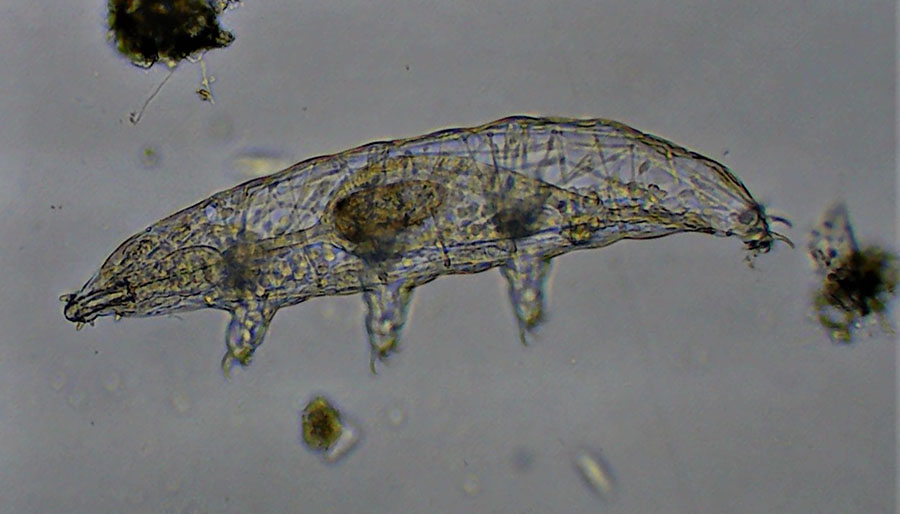
Nature photography requires patience and perseverance. Neal Maine knew that when, one recent day, he headed out to Circle Creek Conservation Center in search of wildlife to capture on camera. With a scalpel, he scraped a scrap of lichen clinging to a spruce tree next to the barn, catching the debris in a jar. Then he headed home to his microscope, emptied the debris onto slides, and started searching. Usually it takes a while before identifiable shapes begin to appear through the eyepiece. But this day, in the very first slide—“as if posing,” Neal recalls—he saw it: a perfect specimen of a water bear—one of the many “beautiful and wonderful things creeping around Circle Creek that we never see.”
Tardigrades, or “water bears,” are eight-legged animals no more than a half-millimeter in length. They are among hundreds of species of microscopic animals that live at Circle Creek (and every other NCLC habitat reserve): on the surface of other animals and plants, in and on the soil, and in the air. They are as essential to the ecosystem as the larger, more recognizable critters with which they share the same landscape.
“Biodiversity scientists estimate that there are at least 10 million multicellular species on Earth, of which 1.7 million have been described,” writes James Cheshire in Where the Animals Go. By “described,” he means found by human scientists, recognized as distinct from other species, and named. He talks about one scientist who set up insect traps behind his house in Ontario, Canada, and—over a decade—used sophisticated DNA analysis to identify what he found. At last count he had identified some 5,000 distinct species, all in his own backyard.
Water bears are found in a wide range of habitats the world over, from tropical rainforests to Antarctica. They’re known as super-resilient, able to withstand even the vacuum of space. They have survived five mass extinctions over Earth’s history. But scientists recently discovered what may be their fatal weakness: an inability to survive prolonged exposure to high temperatures. Climate change, it seems, is threatening even this hardiest of creatures.
Circle Creek Conservation Center is open daily, conditions permitting, for hiking, wildlife-watching, and other passive recreation.
Naturalist Neal Maine helped found NCLC in 1986 and served as its first executive director. Since acquiring a new microscope a couple of years ago (with help from NCLC supporters and friends), Neal has been getting more familiar with the hidden plants and animals of Oregon’s North Coast. Below are some marine diatoms he found in a scoop of seawater on the beach at Gearhart.

Comments